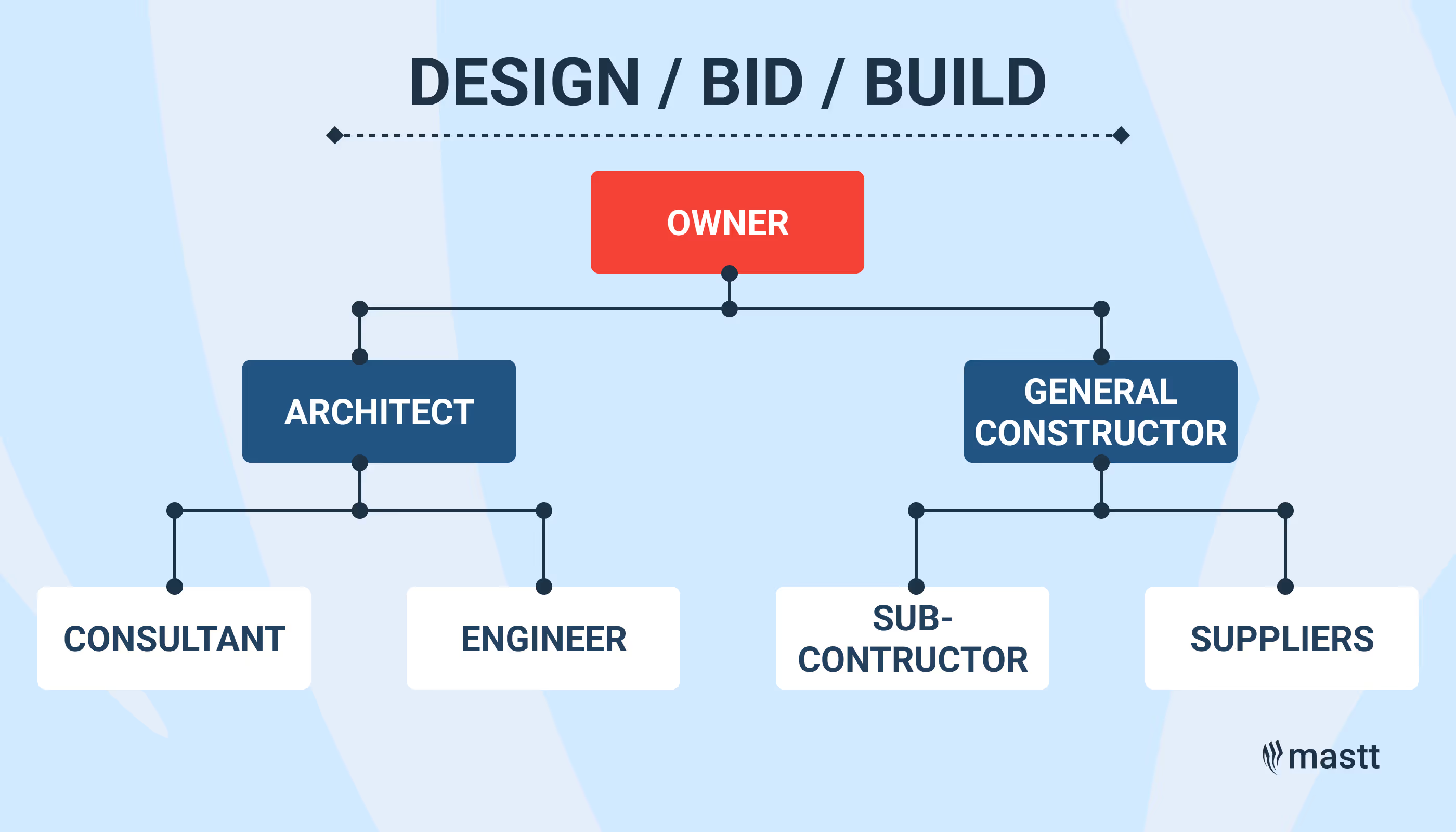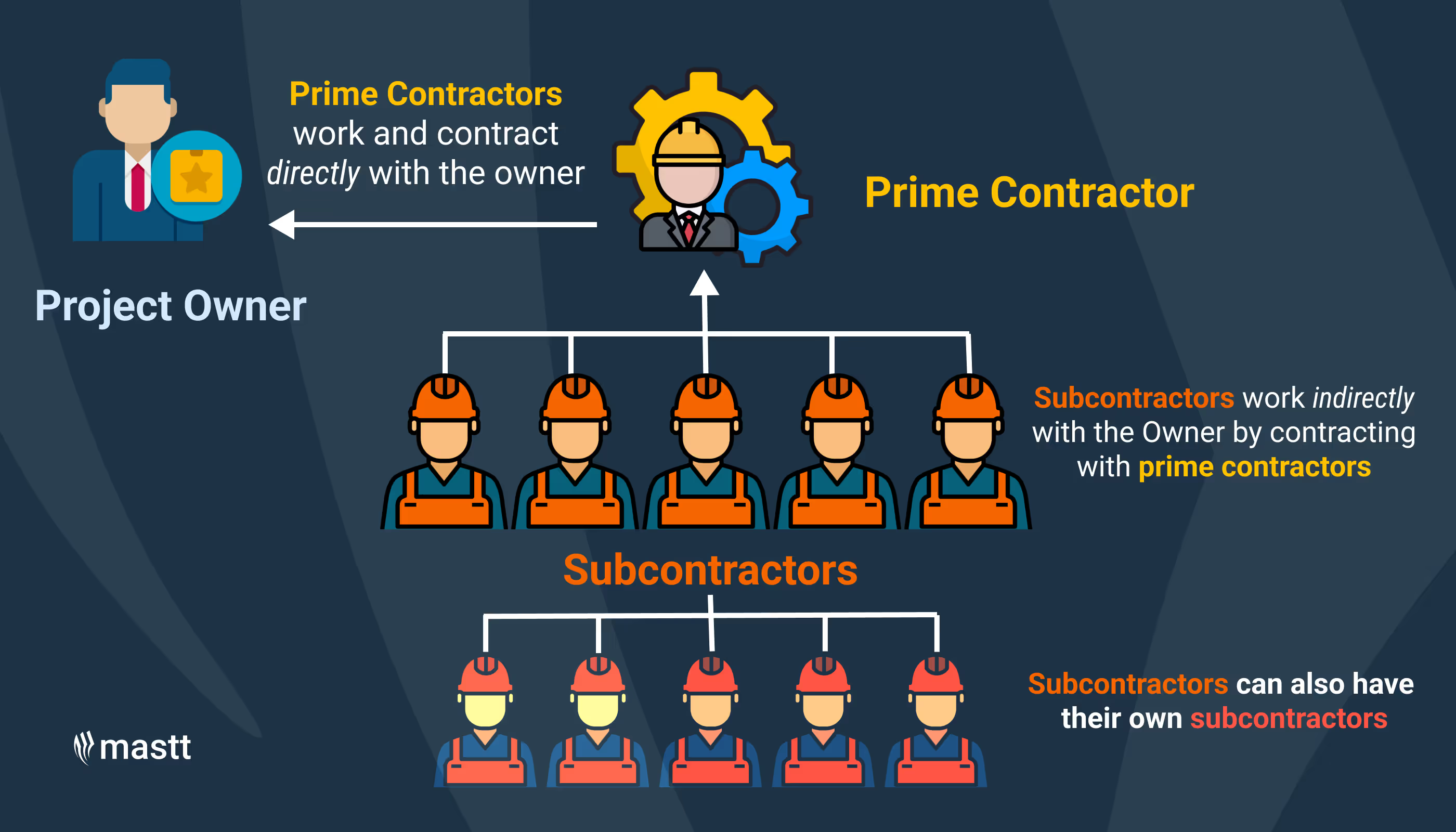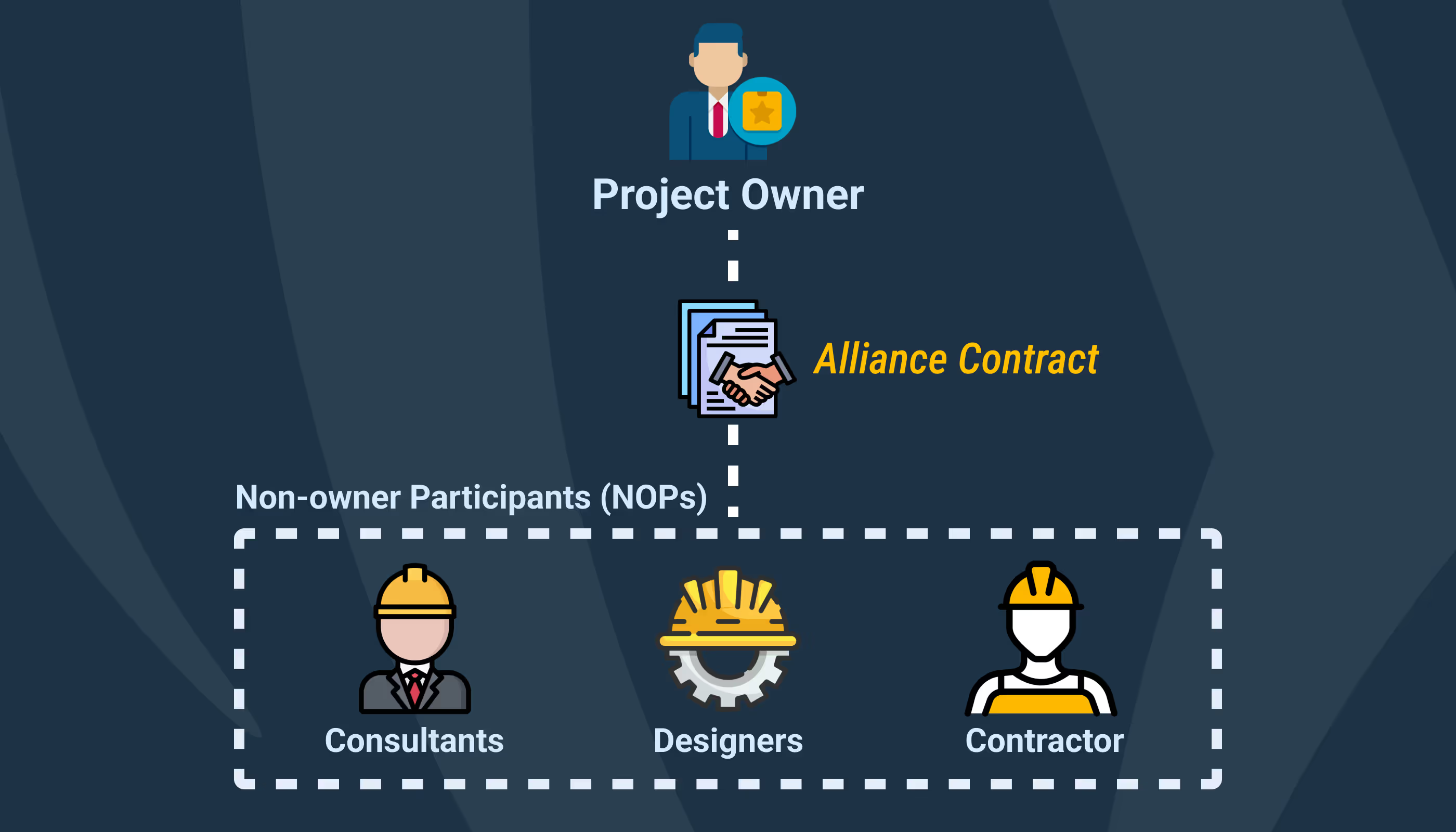Learn the key project delivery methods in construction and get practical tips to choose the right approach for a smooth, successful project.

A procurement plan template for capital project owners providing a comprehensive strategy to engage goods, services, and contractors. Includes timelines, budget considerations, supplier selection criteria, and contract management procedures, to ensure successful project completion.

Every construction project starts with one big question: How do we get this done—on time, on budget, and with no surprises? That’s where project delivery methods come in. Think of them as the game plan that outlines who does what, when, and how.
Choosing the right method isn’t just important—it’s critical. The wrong approach can lead to cost overruns, delays, and endless headaches. But the right one sets the stage for a smooth, successful project.
In this guide, we’ll unpack the different delivery methods, from tried-and-true Design-Bid-Build to cutting-edge approaches like Progressive Design-Build. We’ll also share real-world examples, insider tips, and a simple framework to help you make the best choice for your project.
A project delivery method is a framework that guides how a construction project is planned, designed, and built. It defines the roles and responsibilities of everyone involved—owners, contractors, and designers—and sets the rules for how they work together. It's the backbone of the entire project, ensuring everything runs smoothly from start to finish.
These methods aren’t one-size-fits-all. Each one is tailored to fit the unique needs of a project. For example, a straightforward office remodel might use a traditional approach like Design-Bid-Build, while a sprawling hospital complex might thrive with a collaborative strategy like Progressive Design-Build. Don’t worry—we’ll dig into these approaches in more detail later, so you’ll know exactly what they mean.
It’s also important to understand how these methods shape the project’s workflow. Some prioritize structure and clear boundaries, while others emphasize flexibility and teamwork. We’ll get into how these differences play out and help you decide which method fits your project best.
For now, just remember this: project delivery methods are the foundation of any construction project. They set the stage for success—or failure. We’ll explore why that’s true and show you how to make the right choice as we go.
Every construction project has unique needs, and delivery methods can be divided into three main categories: traditional, alternative, collaborative, and emerging models. Each offers a different way to manage design, construction, and the relationships between stakeholders. Here’s a brief overview of what these categories mean.
Traditional delivery methods follow a more linear and sequential process, often with distinct responsibilities assigned to each stakeholder. These methods are characterized by clearly defined roles, and the owner typically bears the majority of the risk.
Alternative methods focus on streamlining processes or integrating certain aspects of design and construction for efficiency. They often aim to reduce project timelines and promote collaboration.
Collaborative methods emphasize teamwork, transparency, and shared responsibilities to achieve project goals. These approaches aim to align the interests of all stakeholders and improve overall project outcomes.
Emerging methods integrate financial, operational, and performance incentives into the delivery process. These approaches are often used for complex projects requiring long-term management and sustainability.
Selecting the right project delivery method is critical to achieving construction goals efficiently. Each method has unique features, benefits, and challenges, making it essential to align the approach with your project’s complexity, budget, and timeline.
The table below provides a concise comparison of the most common project delivery methods, highlighting their key characteristics, advantages, and potential drawbacks.
Traditional delivery methods form the foundation of construction project management. They follow a straightforward, step-by-step approach, separating the design, bidding, and construction phases. Here’s a closer look at most traditional delivery method in construction.
Design-Bid-Build (DBB), also known as Plan-Spec, is one of the oldest construction methods. It operates in three distinct phases: design, bidding, and construction. The owner hires a designer to create detailed plans, invites contractors to bid, and selects one (usually the lowest bid) to complete the construction. The contractor’s role is to follow the specified plans, with the owner making key decisions during the design phase.
Advantages
Challenges
Best Use Cases
DBB works well for smaller, less complex projects where cost control and predictability are priorities, such as office renovations or custom residential builds.
If you want to learn more about this traditional method, check out our comprehensive article on Design-Bid-Build.

Prime contracting is a project delivery method in which a single contractor, referred to as the prime contractor, assumes full responsibility for the successful completion of the construction project. The prime contractor manages all aspects of the project, including overseeing subcontractors, coordinating construction activities, and maintaining direct communication with the project owner.
Benefits of Prime Contracting
Drawbacks of Prime Contracting
When to Use Prime Contracting
Prime Contracting works best for experienced owners who want full control and have the resources to handle the complexity. It’s ideal for projects requiring customization and cost transparency.
If you want to learn more about this traditional method, check out our article on Prime Contracting.

As construction projects grow more complex, alternative delivery methods are reshaping how teams approach design, construction, and collaboration. These methods aim to streamline processes, reduce risks, and foster stronger teamwork. Let’s explore some of the most effective approaches.

Collaborative methods emphasize the importance of teamwork, open communication, and shared accountability to achieve construction project goals. These approaches are designed to align the interests of all stakeholders, ensuring that everyone’s objectives are integrated into a unified strategy.
Integrated Project Delivery (IPD) is a collaborative construction project management method that unites key stakeholders—owners, designers, contractors, and suppliers—under a single contract. This unified team approach ensures smoother workflows and minimizes delays or unexpected changes during construction.
The financial structure of IPD also reinforces collaboration by linking shared risks and rewards directly to project outcomes, encouraging accountability and teamwork throughout the process.
Benefits of IPD
Drawbacks of IPD
When to Use IPD
IPD is most effective for complex projects that require extensive coordination and innovative problem-solving. It is particularly useful for time-sensitive projects where delays could significantly impact outcomes. Additionally, projects with significant budgets or high stakes often benefit from IPD’s ability to reduce waste and improve efficiency.
Alliance contracting is a collaborative way to manage construction projects. Instead of working separately, owners, contractors, designers, and suppliers join forces as one team. They share both the risks and rewards of the project.
How It Works
In alliance contracting, there’s no hierarchy or blame when problems arise. Decisions are made together, focusing on solutions rather than fault. If the project is successful, everyone benefits. If things go wrong, the team shares the losses. This approach fosters trust, teamwork, and innovation.
Benefits
Cons
Best Uses
Alliance contracting is ideal for large, complex projects where coordination is critical, like highways, bridges, power plants, or pipelines. It’s especially useful in sectors that demand innovation and problem-solving, such as infrastructure and energy.

Early Contractor Involvement (ECI) integrates the contractor early in the project. The process begins with the owner selecting a contractor based on expertise rather than cost alone. The contractor collaborates closely with the owner and designer to refine plans, schedules, and budgets. Once the design is finalized, the contractor transitions seamlessly into construction.
Benefits of ECI
Cons of ECI
When ECI Works Best
ECI is particularly effective for complex or large-scale projects, such as highways, bridges, and airports, where meticulous planning is essential. It also works well for projects with tight budgets, as early contractor input ensures informed decisions and minimizes costly changes later.
Lean Project Delivery focuses on delivering more value with less waste. It brings the entire team—designers, planners, and contractors—together from the start to collaborate. This approach boosts efficiency and reduces delays, making it a smarter way to manage construction projects.
How It Works
Lean methods aim to cut out anything that doesn’t add value. Teams use tools like:
Benefits of Lean Project Delivery
Cons of Lean Project Delivery
When to Use Lean Project Delivery
Lean Project Delivery is ideal for large and complex projects like hospitals, schools, and industrial facilities that require significant coordination. This approach thrives in collaborative environments where stakeholders are open to early involvement and shared responsibilities. It is also a great choice for projects that prioritize long-term value, sustainability, and waste reduction.
Emerging methods introduce innovative frameworks that integrate financial, operational, and performance-driven incentives directly into the delivery process. These methods are particularly effective for complex and large-scale projects that demand long-term management, efficiency, and sustainability. Examples include:
In this method, a private entity assumes responsibility for financing, constructing, and operating a project for a predetermined period. At the end of this period, ownership and operational control are transferred back to the public sector or project owner. This approach is widely used in large-scale infrastructure projects, as it allows public entities to utilize private sector capabilities and resources to deliver critical infrastructure while maintaining eventual ownership.
Pros
Cons
When to Use
Ideal for large infrastructure projects with substantial upfront capital requirements, particularly those with predictable revenue streams like toll roads or utilities. This method is also well-suited when public entities seek to mitigate operational and financial risks by involving private sector expertise.
Design Build and Operate combines design, construction, and operation under one contract, ensuring continuity and accountability over the project lifecycle. This method centralizes responsibilities, creating a streamlined process for delivering and managing complex projects.
Pros
Cons
When to Use
Ideal for projects where operational efficiency is a critical factor, such as water treatment plants, energy facilities, or other infrastructure requiring ongoing performance and maintenance. This method works well when the owner seeks to consolidate responsibilities and ensure accountability over the entire lifecycle of the project.
This method builds on the DBO model by incorporating a financing component. The private partner is responsible for financing, designing, building, and operating the project. They recoup their investment through operational revenues or payments from the public sector, making it a comprehensive approach for delivering large-scale projects.
Pros
Cons
When to Use
Best suited for large infrastructure projects requiring significant upfront capital investment, such as hospitals, schools, transportation networks, or energy facilities. This method is ideal when public entities seek to defer large expenditures and transfer risks while ensuring long-term operational performance.
Choosing the right project delivery method can make or break a construction project. It’s not just about following a standard process—it’s about customizing the approach to match the project’s unique needs. Every decision impacts the budget, timeline, quality, and even how well the stakeholders work together.
No two construction projects are the same. Managing a small office remodel is completely different from building a hospital or a large infrastructure project. For straightforward jobs, traditional methods often work because they follow a clear and linear process. But for more complex projects, collaborative methods can handle the challenges better.
Budget is another key factor. If keeping costs predictable is critical, methods like Guaranteed Maximum Price (GMP), often used in Construction Manager at Risk (CMAR), can help prevent overspending. On the other hand, if finishing quickly is a priority, Design-Build can streamline the process, combining design and construction to save significant time.
Stakeholder alignment is just as important. Owners, contractors, and designers each bring different priorities to a project. Collaborative methods ensure everyone starts on the same page, reducing confusion and conflict down the line. This alignment is especially valuable for high-stakes or time-sensitive projects.
The wrong delivery method can lead to serious issues. Misaligned priorities between stakeholders can cause miscommunication and conflict. A poor fit between the delivery method and the project’s needs often results in delays and extra costs.
According to McKinsey & Company, large construction projects typically run 20% over budget and 80% behind schedule, with delivery inefficiencies being a major cause. These delays and cost overruns don’t just create headaches—they hurt profits, reputations, and future opportunities.
For owners, the fallout could mean unmet goals and financial losses. Contractors and designers may face strained client relationships, making it harder to win new work.
Choosing the right project delivery method is more than just a technical decision—it’s a strategic choice that can make or break a construction project. Each method has its strengths and challenges, and no single approach works for every situation. That’s why it’s critical to evaluate your project’s unique needs, goals, and constraints before settling on a delivery method.
Ultimately, the best delivery method is one that aligns with your project’s scope, budget, timeline, and risk tolerance while fostering strong collaboration among stakeholders. By carefully assessing your options and involving experienced professionals early in the process, you can set the stage for a project that is delivered on time, within budget, and with results that exceed expectations.
The right game plan isn’t just about getting the job done—it’s about achieving excellence.

Cut the stress of showing up unprepared
Start for FreeTrusted by the bold, the brave, and the brilliant to deliver the future